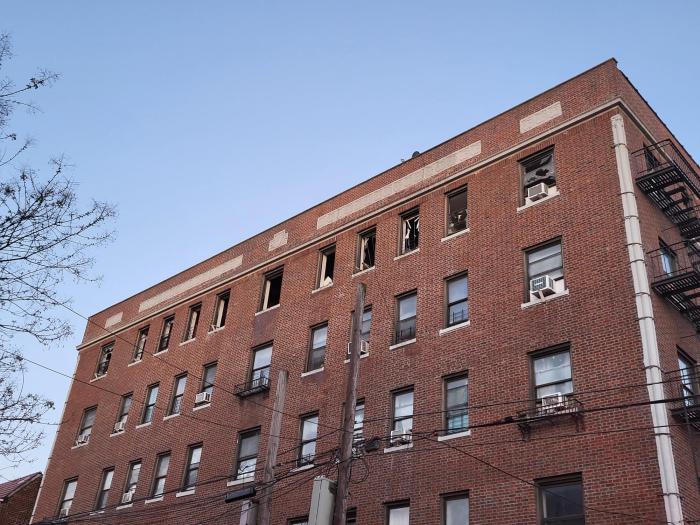The hum of generators and the roar of truck engines can be heard throughout Breezy Point as residents and emergency workers feverishly push to rebuild after Superstorm Sandy.
Before that fateful Monday, October 29, when Sandy tore through the East Coast, life in the small beach town was relatively simple. But now, a month later, people have been working around the clock to clean up the destruction that Sandy left behind.
“We’re back to a little bit of normal,” said Breezy Point resident Liz Bianco, as she brought her young daughter to swim practice. “We’re hanging in there.”
During the storm, Bianco’s home was infiltrated with three feet of water, and although thankful she still has a home, she has a lot of work to do.
Days after the damage was done, Bianco spoke to The Courier as she filled water jugs at a Department of Environmental Protection (DEP) installed water pump to take back to the local church where she and other evacuees were staying. Her two daughters, Julian, nine and Leigh, four, sat nearby.
Now, she and countless others are following procedure to restore their flood-damaged homes. The sea water inside Bianco’s house left stains on the wall and destroyed every item inside. Those who suffered a similar fate have had to throw out all of the lost items and wait for an insurer to come and survey what is left to determine what compensation they will receive.
Aside from the extensive water damage that most of the Breezy Point homes received, a fire that sparked during the storm rapidly spread and reduced 111 houses to ashes.
“These people need all the help we can give them,” said Richie Nouvertne of NASDI, LLC, a demolition remediation company. “Whatever they need the help with, we give it to them.”
Nouvertne said that they have been filling roughly 50 trucks every day with debris and garbage from people’s houses.
“We can’t get out of the way fast enough before the debris comes back,” said Nouvertne. “After we clean it, we leave the block spotless, then we’ll come back and it looks like we weren’t even there. I’ve never seen anything like it.”
 Despite the time that has passed, much of the disaster area hasn’t changed. Some homes still remain off of their foundations; facades of other houses are still in shambles; doors and windows have been replaced with wood panels, and the number of damaged household items continues to grow. Refrigerators, bathtubs and insulation pieces can be found all along the streets.
Despite the time that has passed, much of the disaster area hasn’t changed. Some homes still remain off of their foundations; facades of other houses are still in shambles; doors and windows have been replaced with wood panels, and the number of damaged household items continues to grow. Refrigerators, bathtubs and insulation pieces can be found all along the streets.
Recovery efforts, however, are still very apparent. Aside from sanitation trucks, the Breezy Point roads are filled with contracting, heating and plumbing, and moving and storage trucks. Mobile units from the Red Cross, the Federal Emergency Management Authority (FEMA) and more are set up in parking lots, and food trucks and tents are set up, serving free meals to residents and emergency workers.
“There was no power, there was no hot food,” said Bobby Eustace of the FDNY’s 17th Battalion. “The one thing we can do to comfort people and to ease their pain is give them a hot plate of food.”
Local stores such as the supermarket and hardware store are up and running, taking customers day in and day out. Signs are posted throughout the streets, advertising free help clearing out homes or asking volunteers to sign up to aid relief efforts.
“All we want to do is help people. We’ve seen everyone come together. When disaster hits New Yorkers love each other,” said Nouvertne.


































